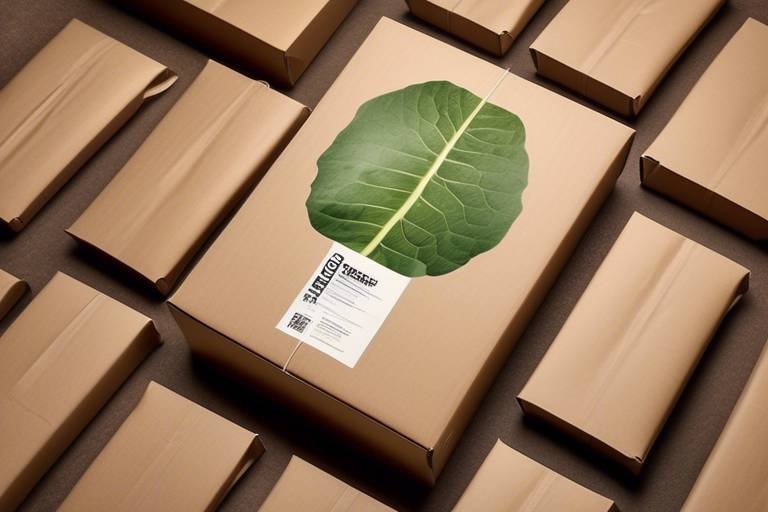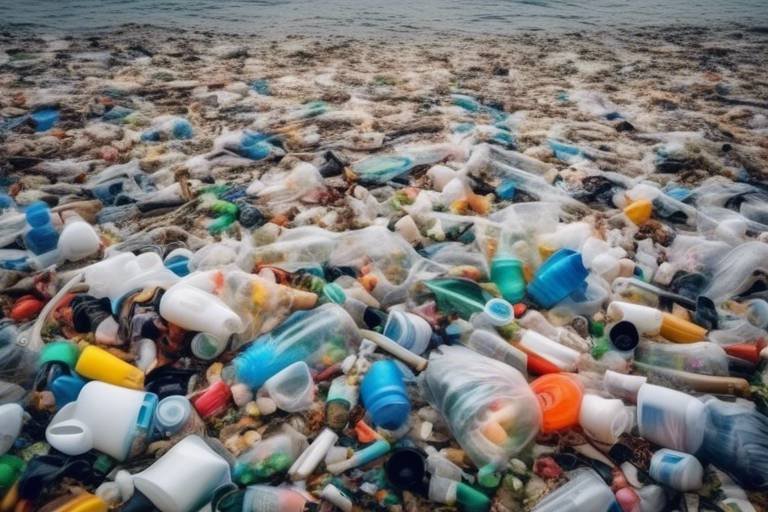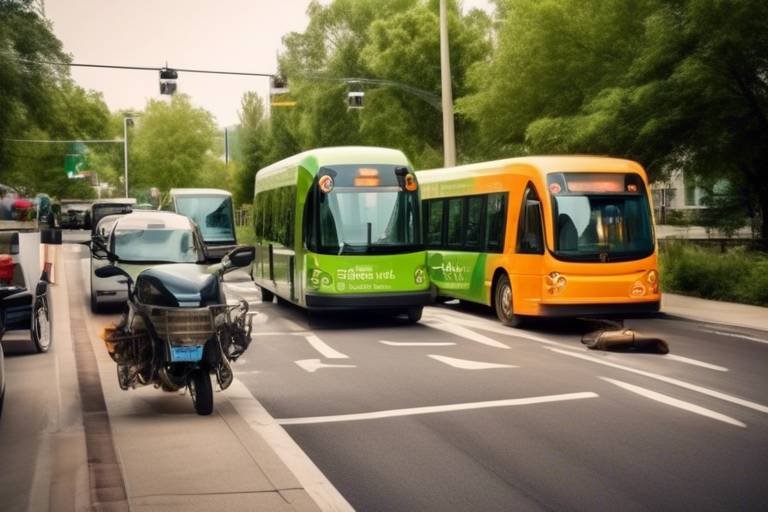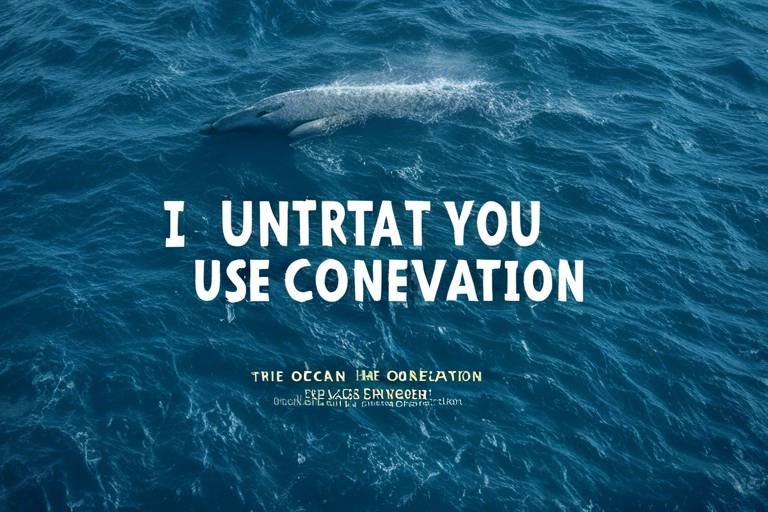The Benefits of Sustainable Packaging Solutions
Sustainable packaging solutions offer a myriad of benefits that extend beyond just environmental conservation. By adopting eco-friendly packaging practices, businesses can significantly reduce their carbon footprint and contribute to a healthier planet. Not only does sustainable packaging help in minimizing waste generation, but it also plays a crucial role in conserving natural resources for future generations. This shift towards sustainability is not only a responsible choice but also a strategic one, aligning businesses with the growing global focus on environmental stewardship.

Reduced Environmental Impact
Exploring the advantages of adopting sustainable packaging practices in various industries and the positive impacts on the environment, business operations, and consumer perception.
Sustainable packaging plays a vital role in reducing the environmental impact of various industries. By utilizing eco-friendly materials and design practices, companies can significantly minimize waste generation, lower carbon emissions, and contribute to the conservation of natural resources. Imagine a world where every product we purchase is packaged sustainably, leading to a substantial decrease in landfill waste and pollution.

Cost-Efficiency and Savings
Sustainable packaging offers significant cost-efficiency and savings benefits for businesses across various industries. By adopting eco-friendly packaging solutions, companies can reduce their overall expenses while also contributing to a more sustainable future.
One of the primary financial advantages of sustainable packaging is the reduction in material expenses. Utilizing recyclable or biodegradable materials can lower the costs associated with packaging production, as these materials are often more cost-effective in the long run.
In addition to material savings, sustainable packaging helps in decreasing transportation costs. Lighter and more compact eco-friendly packaging materials require less fuel for shipping, leading to lower transportation expenses and a reduced carbon footprint.
Moreover, businesses that implement sustainable packaging practices may be eligible for tax incentives and rebates. Governments and regulatory bodies often provide financial benefits to companies that prioritize environmental sustainability, further enhancing cost-efficiency and savings.
By investing in sustainable packaging, businesses can not only save money but also build a positive brand image. Consumers increasingly prefer products packaged in an environmentally friendly manner, making eco-conscious packaging a valuable marketing tool that can drive sales and enhance customer loyalty.

Enhanced Brand Reputation
When it comes to sustainable packaging solutions, one of the most significant benefits for businesses is the enhancement of their brand reputation. By opting for eco-friendly packaging, companies showcase their commitment to environmental responsibility, which resonates positively with consumers who prioritize sustainability. This shift towards sustainable practices not only differentiates brands in a crowded market but also attracts a growing segment of environmentally conscious customers who actively seek out products with minimal environmental impact.
Moreover, investing in sustainable packaging demonstrates a brand's values and ethics, fostering a deeper connection with consumers who appreciate transparency and authenticity. The eco-friendly packaging becomes a tangible representation of the company's dedication to social and environmental causes, creating a strong emotional bond with customers who share similar values. This positive brand image can lead to increased customer loyalty, advocacy, and ultimately, a competitive edge in the market.
Furthermore, sustainable packaging can serve as a storytelling tool for brands, allowing them to communicate their sustainability efforts and initiatives effectively. Consumers today are not just buying products; they are investing in the values and purpose behind the brand. By aligning packaging practices with sustainable values, companies can engage in meaningful conversations with their audience, building trust and loyalty over time.

Regulatory Compliance and Standards
When it comes to sustainable packaging solutions, regulatory compliance and adherence to standards play a crucial role in ensuring the effectiveness and credibility of such practices. Companies need to stay updated with the latest regulations regarding packaging materials, recycling requirements, and environmental impact assessments to avoid penalties and maintain a positive reputation.
One key aspect of regulatory compliance is obtaining certifications from reputable organizations like the Forest Stewardship Council (FSC) and the Biodegradable Products Institute (BPI). These certifications not only demonstrate a commitment to sustainability but also provide assurance to consumers that the packaging meets specific environmental criteria.
Meeting consumer demands for eco-friendly packaging solutions is no longer just a trend but a necessity in today's market. Customers are increasingly conscious of the environmental impact of their purchasing decisions and are more likely to support brands that prioritize sustainability. By complying with regulations and standards, businesses can build trust with their target audience and gain a competitive edge in the industry.
Furthermore, sustainable packaging practices contribute to a positive corporate image and demonstrate a company's dedication to social responsibility. By aligning with global sustainability goals and industry standards, organizations can showcase their commitment to reducing their ecological footprint and supporting a more sustainable future for all.
In conclusion, regulatory compliance and adherence to standards are essential components of adopting sustainable packaging solutions. By following established guidelines, obtaining relevant certifications, and meeting consumer expectations, businesses can not only reduce their environmental impact but also enhance their brand reputation and contribute to a more sustainable economy.

Innovation and Creativity
Sustainable packaging goes beyond just being environmentally friendly; it also serves as a catalyst for in the packaging industry. By embracing sustainable practices, companies are pushed to think outside the box and come up with inventive solutions that not only benefit the planet but also captivate consumers.
One of the key aspects of sustainable packaging is the focus on using alternative materials that are renewable, recyclable, or biodegradable. This shift towards eco-friendly materials encourages designers to explore new possibilities and experiment with unconventional resources, leading to packaging designs that are both visually appealing and sustainable.
Moreover, the drive towards sustainability sparks collaboration and partnerships among different stakeholders in the supply chain. From raw material suppliers to packaging manufacturers to retailers, everyone is encouraged to work together to find innovative ways to reduce waste, minimize environmental impact, and create packaging solutions that resonate with today's conscious consumers.
With the rise of sustainable packaging, there is also a growing emphasis on consumer engagement through packaging design. Companies are leveraging packaging as a storytelling tool, using creative designs and messaging to educate consumers about sustainability issues and inspire them to make more environmentally conscious choices.
Furthermore, sustainable packaging drives efficiency and optimization in the production process. By rethinking traditional packaging methods and materials, companies are forced to streamline their operations, adopt more efficient practices, and embrace technological advancements that lead to cost savings and improved overall performance.
In essence, sustainable packaging is not just a trend; it is a catalyst for innovation that challenges the status quo, inspires creativity, and paves the way for a more sustainable future for the packaging industry and the planet as a whole.

Extended Product Shelf Life
Exploring the advantages of adopting sustainable packaging practices in various industries and the positive impacts on the environment, business operations, and consumer perception.
Sustainable packaging plays a crucial role in extending the shelf life of products, especially perishable goods like food and beverages. By utilizing innovative materials and design strategies, sustainable packaging can enhance product preservation and reduce food waste significantly. Imagine a world where fruits and vegetables stay fresher for longer periods, reducing the need for frequent replacements and ultimately contributing to a more sustainable food system.

Supply Chain Optimization
Supply chain optimization is a crucial aspect of sustainable packaging solutions, as it involves streamlining operations, enhancing efficiency, and building strong relationships with suppliers and vendors. By implementing sustainable practices throughout the supply chain, businesses can reduce waste, minimize environmental impact, and improve overall performance.
One key benefit of supply chain optimization through sustainable packaging is the improvement in logistics efficiency. By using eco-friendly materials that are lightweight and easy to transport, companies can reduce shipping costs and carbon emissions. This not only benefits the environment but also contributes to cost savings and operational efficiency.
Furthermore, sustainable packaging practices can help foster partnerships with like-minded suppliers and vendors who share a commitment to environmental responsibility. Collaborating with sustainable partners can lead to shared values, mutual support, and innovative solutions that drive positive change throughout the supply chain.
Another advantage of supply chain optimization in sustainable packaging is the ability to meet consumer demands for environmentally friendly products. By ensuring that products are packaged in a sustainable manner, businesses can attract eco-conscious consumers who prioritize sustainability in their purchasing decisions.
In conclusion, supply chain optimization plays a vital role in the success of sustainable packaging solutions by improving efficiency, reducing costs, and meeting consumer expectations. By integrating sustainability into every step of the supply chain, businesses can create a more resilient, responsible, and competitive operation.

Consumer Education and Engagement
Consumer education and engagement play a crucial role in the shift towards sustainable packaging solutions. By incorporating informative labeling on products, brands can educate consumers about the environmental benefits of choosing eco-friendly packaging. This transparency fosters a sense of trust and responsibility among customers, encouraging them to make more informed purchasing decisions. Furthermore, engaging with consumers through social media campaigns, interactive websites, and educational events can create a community of environmentally conscious individuals who advocate for sustainable practices.
One effective way to educate consumers is through product storytelling. Brands can use packaging as a medium to convey the journey of the product, highlighting its sustainable attributes and the positive impact of choosing eco-friendly options. This narrative approach not only educates consumers but also creates an emotional connection, making them more likely to support brands that align with their values.
Moreover, collaborations with environmental organizations can enhance consumer education efforts. By partnering with NGOs or sustainability experts, brands can leverage their expertise to create educational materials, workshops, and campaigns that raise awareness about the importance of sustainable packaging. These partnerships not only educate consumers but also demonstrate a brand's commitment to environmental stewardship.
Additionally, interactive experiences such as augmented reality packaging or QR code-enabled information can provide consumers with in-depth knowledge about the sustainability practices of a brand. By allowing consumers to scan packaging and access detailed information about the materials used, recycling instructions, and environmental impact, brands can empower consumers to make environmentally conscious choices.
Creating a feedback loop with consumers is essential for continuous education and engagement. Brands can solicit feedback through surveys, social media polls, and focus groups to understand consumer preferences, concerns, and suggestions regarding sustainable packaging. By actively listening to consumer feedback and incorporating their input into packaging decisions, brands can build a loyal customer base that values transparency and sustainability.
Frequently Asked Questions
- What are the main benefits of sustainable packaging solutions?
Sustainable packaging offers a range of advantages, including reduced environmental impact, cost-efficiency, enhanced brand reputation, regulatory compliance, innovation opportunities, extended product shelf life, supply chain optimization, and improved consumer education and engagement.
- How does sustainable packaging contribute to reducing environmental impact?
Sustainable packaging helps in minimizing waste generation, lowering carbon emissions, and conserving natural resources, ultimately leading to a greener planet and healthier ecosystems.
- Can sustainable packaging solutions help businesses save money?
Absolutely! By reducing material expenses, lowering transportation costs, and potentially qualifying for tax incentives, businesses can experience significant cost savings by adopting sustainable packaging practices.
- What role does sustainable packaging play in enhancing brand reputation?
Using eco-friendly packaging can improve brand image, attract environmentally conscious consumers, and set products apart in the market, showcasing a commitment to sustainability and social responsibility.
- How can companies ensure regulatory compliance with sustainable packaging?
Companies can adhere to sustainability regulations, obtain certifications like FSC and BPI, and meet consumer demands for eco-friendly packaging solutions to stay compliant and demonstrate a commitment to environmental stewardship.
- What opportunities for innovation are presented by sustainable packaging?
Sustainable packaging fosters innovation in design, materials, and production processes, leading to unique and attractive packaging solutions that not only benefit the environment but also appeal to consumers seeking sustainable products.
- How does sustainable packaging contribute to extending product shelf life?
By enhancing product preservation, reducing food waste, and promoting reuse and recycling through a circular economy approach, sustainable packaging plays a crucial role in ensuring products stay fresh and contribute to a more sustainable future.
- What impact does sustainable packaging have on supply chain operations?
Sustainable packaging practices streamline supply chain operations, improve logistics efficiency, and foster partnerships with like-minded suppliers and vendors, creating a more sustainable and resilient supply chain network.
- How does sustainable packaging help in consumer education and engagement?
Sustainable packaging serves as a tool to educate consumers about environmental issues, promote responsible consumption habits, and create a sense of community and shared responsibility towards building a more sustainable future for all.



















